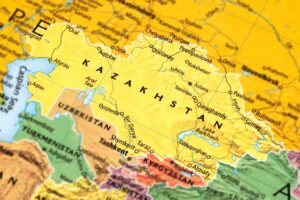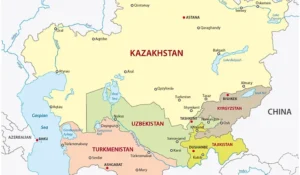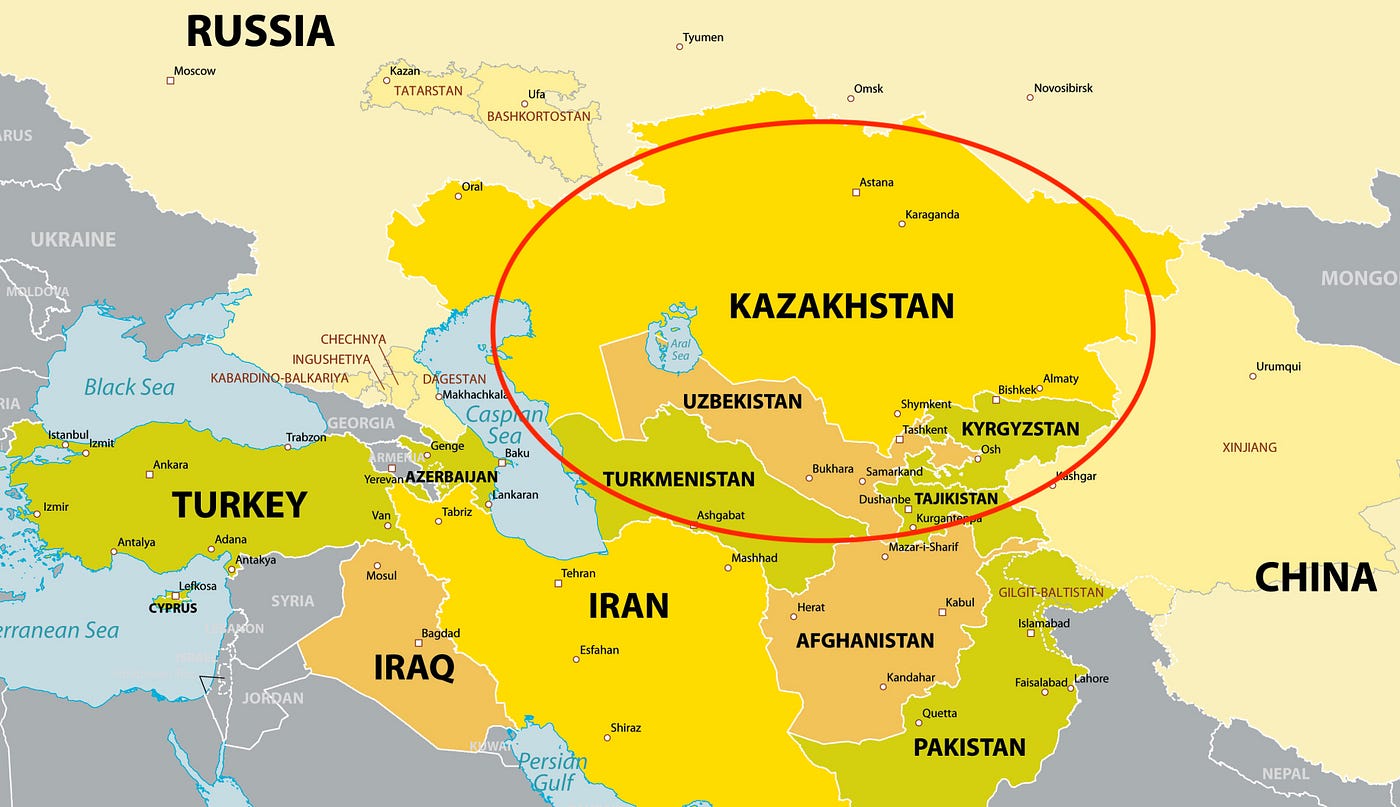Exploring Central Asia: A Land of Mountains and History
Central Asia is a huge region known for its stunning mountains, vast deserts, and grassy plains. This area is called Central Asia, and it’s bordered by the Caspian Sea on one side and China on the other. It’s a special place because it has been a crossroads for many people and goods traveling between Europe and Asia for centuries.
In Central Asia, you will find five unique countries: Kazakhstan, Kyrgyzstan, Tajikistan, Turkmenistan, and Uzbekistan. Each of these countries has its own culture and history, making Central Asia a fascinating region to learn about. From the bustling cities to the peaceful rural areas, there’s so much to explore in this diverse and beautiful part of the world.
Exploring the Diverse Cultures of Central Asia
Central Asia is a melting pot of cultures and traditions. The people in this region come from various ethnic backgrounds, including Kazakhs, Uzbeks, Tajiks, Kyrgyz, and Turkmens. Each group has its own unique customs and practices.
For example, Kazakh culture includes traditional music and horsemanship, while Uzbek culture is known for its vibrant textiles and crafts. Exploring these diverse cultures helps us understand the rich heritage of Central Asia. Festivals and local events are great ways to experience these traditions firsthand.
Learning about the cultures of Central Asia also shows how different groups have influenced each other over time. This cultural exchange has created a unique blend of traditions and practices. Visitors to Central Asia can enjoy a variety of cultural experiences, from traditional dances to local foods.
The Impact of the Silk Road on Central Asia
The Silk Road was an ancient trade route that connected Central Asia with China, the Middle East, and Europe. This route was crucial for the movement of goods, ideas, and cultures across continents. Central Asia was a central hub on this route.
Goods like silk, spices, and precious metals were traded along the Silk Road. This trade brought wealth and cultural exchange to Central Asia. Many historical sites and cities in the region grew and prospered because of this trade.
The legacy of the Silk Road is still visible in Central Asia today. Many historical buildings and artifacts from this period can be explored. Understanding the impact of the Silk Road helps us appreciate how Central Asia became a cultural crossroads.
Traditional Music and Dance of Central Asia
Music and dance are important parts of Central Asian culture. Each country in the region has its own traditional music styles and dances. These performances are often seen during festivals and celebrations.
For example, Kyrgyzstan is known for its epic storytelling through music, while Uzbekistan features intricate dance moves in its performances. Traditional instruments like the dombra and the dutar are used in many Central Asian countries. These musical traditions are a key part of the cultural heritage of Central Asia.
Experiencing the traditional music and dance of Central Asia provides insight into the region’s cultural practices. These performances are not only entertaining but also a way to connect with the history and traditions of Central Asia.
The Role of Central Asia in Modern Geopolitics

Central Asia plays an important role in today’s global politics. The region’s strategic location between major powers like China, Russia, and the Middle East makes it significant for international relations. Central Asia is also rich in natural resources like oil and gas.
Countries in Central Asia are working to strengthen their political and economic ties with global partners. This includes improving trade relationships and participating in international organizations. Understanding Central Asia’s role in modern geopolitics helps us see how it influences global events.
The region’s position and resources make it a key player in global strategies. Watching how Central Asia develops politically and economically can provide insights into its future impact on the world.
Central Asia’s Unique Wildlife and Conservation Efforts
Central Asia is home to a variety of unique wildlife, including animals like the snow leopard, wild camels, and saiga antelopes. The diverse landscapes of the region provide habitats for these animals. Protecting these species is important for maintaining biodiversity.
Conservation efforts in Central Asia focus on protecting endangered species and preserving natural habitats. Organizations and local communities are working together to address environmental challenges and ensure the survival of these animals. Efforts include creating protected areas and promoting sustainable practices.
By learning about Central Asia’s wildlife and conservation efforts, we can appreciate the importance of preserving natural environments. These efforts help protect the unique species that inhabit the region and ensure their future.
Central Asia’s Influence on World Art and Architecture
Central Asia has had a significant influence on art and architecture throughout history. The region’s unique styles can be seen in ancient buildings, textiles, and artworks. Central Asian art often features intricate designs and vibrant colors.
Historical sites like the Registan in Uzbekistan and the mausoleums of Samarkand showcase the region’s architectural achievements. Traditional crafts such as embroidery and pottery also reflect Central Asia’s artistic heritage. The blend of different cultural influences has shaped the art and architecture of the region.
Exploring Central Asia’s art and architecture provides insight into its historical and cultural development. The region’s contributions to world art and design are a testament to its rich cultural legacy.
The History of Central Asia’s Ancient Civilizations
Central Asia has been home to several ancient civilizations that shaped its history. These include the Persian Empire, the Greco-Bactrian Kingdom, and the Mongol Empire. Each civilization left a lasting impact on the region.
The ruins of ancient cities and fortresses provide evidence of Central Asia’s rich past. These historical sites offer a glimpse into the lives of people who lived thousands of years ago. Learning about these ancient civilizations helps us understand how Central Asia’s history has evolved over time.
The influence of these civilizations is still present in Central Asia today. Exploring historical sites and artifacts reveals the region’s complex and fascinating history.
Education and Learning Opportunities in Central Asia
Education is an important aspect of life in Central Asia, with many opportunities for learning and growth. Schools and universities in the region offer a range of subjects and programs. Students can pursue education in fields like science, arts, and technology.
Central Asia is also home to several historical educational institutions, such as ancient madrasas. These institutions played a key role in the development of education in the region. Today, modern educational facilities continue to build on this legacy.
Understanding the education system in Central Asia provides insight into the region’s commitment to learning and development. Education is a crucial part of Central Asia’s progress and future growth.
Central Asia’s Contributions to Global Science and Technology
Central Asia has made notable contributions to science and technology throughout history. Ancient scholars and scientists from the region have made important discoveries and advancements. For example, mathematician Al-Khwarizmi, who lived in Central Asia, is known as the father of algebra.
In modern times, Central Asia continues to contribute to scientific research and technological innovation. Universities and research institutions in the region are involved in various fields, including space exploration and environmental science. These contributions highlight Central Asia’s ongoing role in global advancements.
Exploring Central Asia’s scientific and technological achievements shows how the region has influenced and contributed to global progress.
Exploring the Traditional Crafts of Central Asia
Central Asia is known for its traditional crafts, which reflect the region’s rich cultural heritage. These crafts include weaving, pottery, and metalwork. Artisans use traditional techniques to create beautiful and functional items.
For example, the intricate patterns of Central Asian carpets and textiles are famous worldwide. Pottery and metalwork often feature unique designs that showcase local craftsmanship. These traditional crafts are an important part of Central Asia’s cultural identity.
Learning about and appreciating these crafts provides insight into the skills and traditions of Central Asian artisans. These crafts not only represent the region’s artistic heritage but also its history and culture.
Central Asia’s Natural Wonders and National Parks
Central Asia is home to many natural wonders and national parks that showcase its diverse landscapes. From the stunning peaks of the Tien Shan Mountains to the serene beauty of the Aral Sea, the region offers a wide range of natural attractions.
National parks in Central Asia protect these natural wonders and provide opportunities for outdoor activities. Visitors can explore landscapes like the Charyn Canyon in Kazakhstan or the beautiful Issyk-Kul Lake in Kyrgyzstan. These parks help preserve the region’s unique natural environment.
Exploring Central Asia’s natural wonders highlights the importance of conservation and appreciation of the region’s natural beauty. These landscapes offer a chance to experience the stunning scenery and outdoor adventures available in Central Asia.
The Impact of Climate Change on Central Asia
Climate change is having a significant impact on environment. The region is experiencing changes in weather patterns, melting glaciers, and shrinking water sources. These changes affect both the natural environment and the people living.
Efforts to address climate change in include initiatives to conserve water, protect natural habitats, and promote sustainable practices. Understanding the impact of climate change helps us see the challenges and opportunities for the region’s future.
By learning about and addressing climate change can work towards a more sustainable future. The region’s response to these environmental challenges will shape its ability to adapt and thrive.
Central Asia’s Influence on Modern Cuisine
It has influenced modern cuisine with its traditional flavors and cooking techniques. Dishes from the region, such as plov and lagman, have gained popularity and are enjoyed by people around the world. These dishes reflect the diverse ingredients and culinary tradition
The use of spices, herbs, and unique cooking methods in cuisine adds to its rich flavor profile. Modern chefs continue to incorporate these traditional elements into their dishes, creating a fusion of old and new. Exploring Central Asia’s influence on cuisine provides a taste of its cultural heritage.
Understanding how Central Asia’s culinary traditions have evolved and influenced modern cooking highlights the region’s role in global food culture.
The Role of Central Asia in Sustainable Development
Central Asia is working towards sustainable development to balance economic growth with environmental protection. Initiatives in the region focus on areas such as renewable energy, conservation, and sustainable agriculture. These efforts aim to address environmental challenges and promote long-term prosperity.
Projects in Central Asia include developing clean energy sources, protecting endangered species, and promoting eco-friendly farming practices. By prioritizing sustainability, the region aims to improve the quality of life for its people and protect its natural resources.
Understanding Central Asia’s commitment to sustainable development shows how the region is addressing modern challenges and working towards a greener future.
Central Asia’s Historical Trade Routes and Their Legacy
Central Asia’s historical trade routes, such as the Silk Road, have left a lasting legacy on the region. These routes facilitated the exchange of goods, ideas, and cultures between East and West. The influence of these trade routes can still be seen in today.
Historical cities along these trade routes, such as Samarkand and Bukhara, are known for their rich history and cultural heritage. Exploring these cities provides insight into the impact of trade on the region’s development. The legacy of the trade routes continues to shape identity.
Learning about historical trade routes highlights the region’s important role in global history and cultural exchange.
Discovering Central Asia’s Unique Festivals and Celebrations
Central Asia is known for its vibrant festivals and celebrations that showcase its cultural diversity. These events include traditional music, dance, and culinary delights. Festivals such as Nowruz and the Uzbek Melon Festival offer a glimpse into the region’s customs and traditions.
Each country in has its own unique celebrations, reflecting its cultural heritage and local customs. Participating in these festivals provides a fun and immersive way to experience culture. Understanding these celebrations helps us appreciate the region’s festive spirit and community traditions.
Central Asia’s Economic Opportunities and Challenges
It is experiencing economic growth with new opportunities in various sectors, including energy, mining, and agriculture. The region’s natural resources and strategic location make it an attractive destination for investment and development.
However, also faces challenges such as infrastructure development, economic diversification, and regional cooperation. Addressing these challenges is essential for achieving sustainable growth and improving the quality of life for its people.
Exploring economic opportunities and challenges provides insight into the region’s potential and the steps needed to achieve its economic goals.
The History and Legacy of Central Asia’s Ancient Empires
It was home to several ancient empires that played a significant role in shaping the region’s history. Empires such as the Persian Empire, the Greco-Bactrian Kingdom, and the Mongol Empire left a lasting impact
The ruins and artifacts from these ancient empires provide valuable insights into their achievements and influence. Understanding the history and legacy of these empires helps us appreciate the region’s rich cultural heritage and historical significance.
The Importance of Regional Cooperation in Central Asia

Regional cooperation is crucial for addressing common challenges and promoting development in Countries in the region are working together on issues such as trade, security, and environmental protection.
Collaborative efforts include regional organizations and agreements that aim to improve relations and support mutual goals. Regional cooperation helps tackle shared problems and achieve collective progress.
Understanding the importance of regional cooperation highlights how countries in are working together to build a better future for the region.
Central Asia’s Role in Global Energy Markets
It plays a significant role in global energy markets due to its vast natural resources, including oil and gas. The region’s energy resources are important for meeting global energy needs and driving economic growth.
Countries in are developing their energy sectors and exploring new opportunities for production and export. Understanding role in global energy markets provides insight into the region’s economic significance and its impact on the world.
Conclusion
Central Asia is a fascinating region with a rich history and diverse cultures. From its ancient trade routes to its modern cities, there is so much to explore and learn about. The region’s unique landscapes, vibrant traditions, and ongoing developments make it an exciting place to study and visit.
As continues to grow and change, it will surely offer new opportunities and challenges. Understanding its past and present helps us appreciate how this important region fits into the world. Whether you’re interested in history, culture, or current events, has something special to offer everyone.













Post Comment